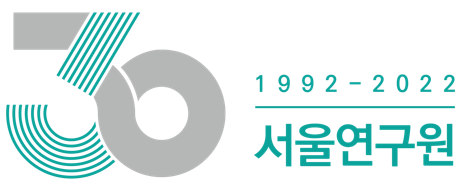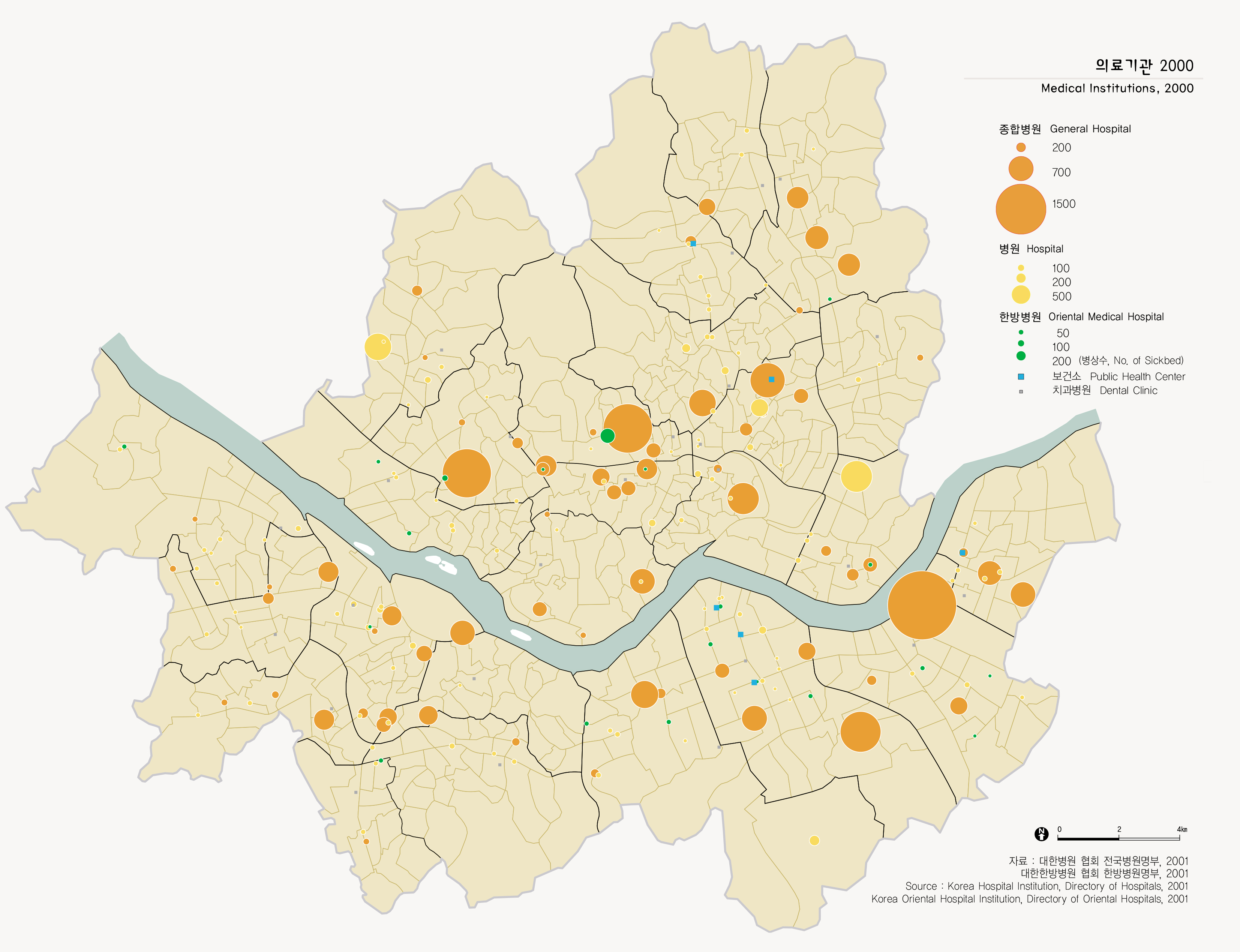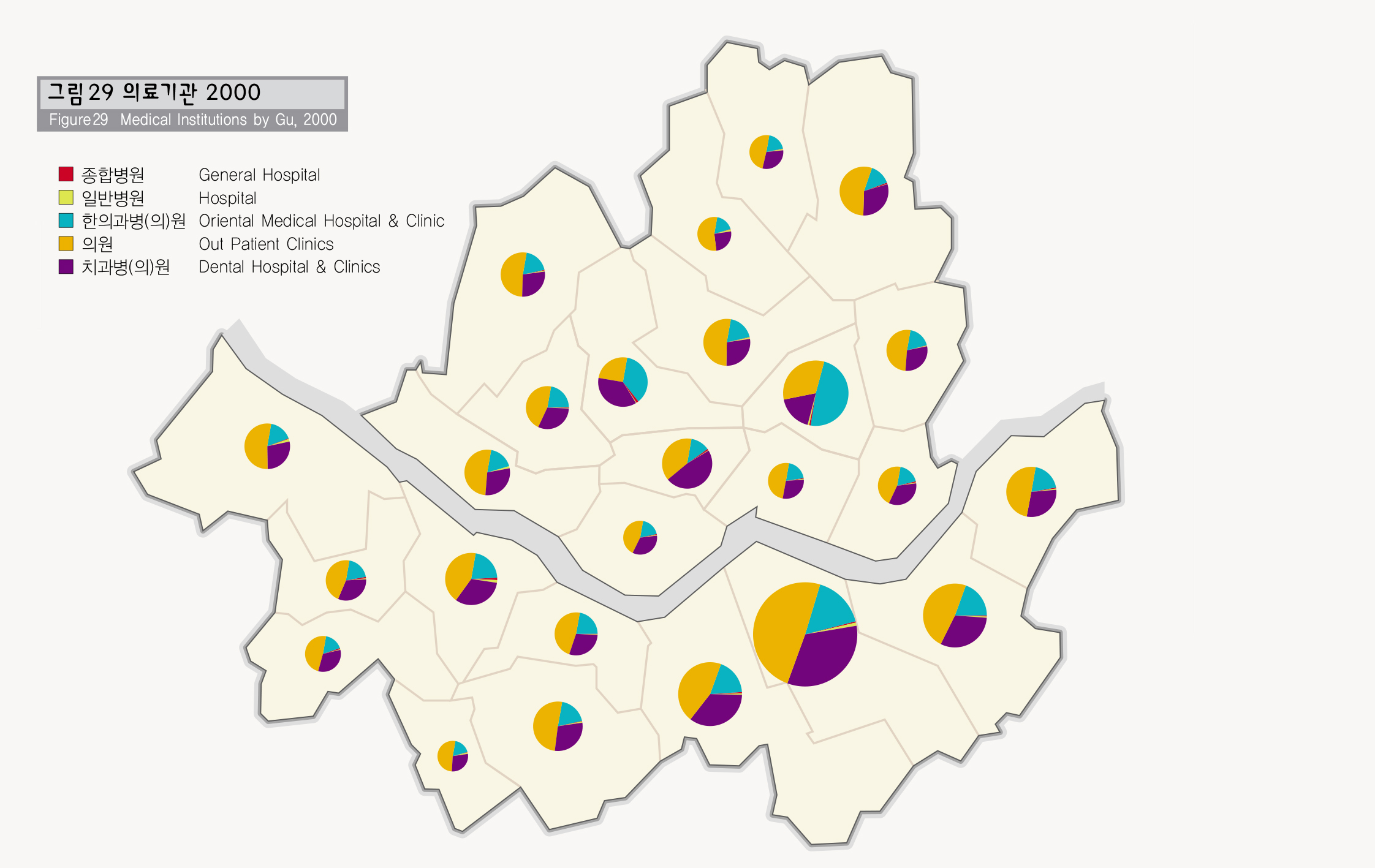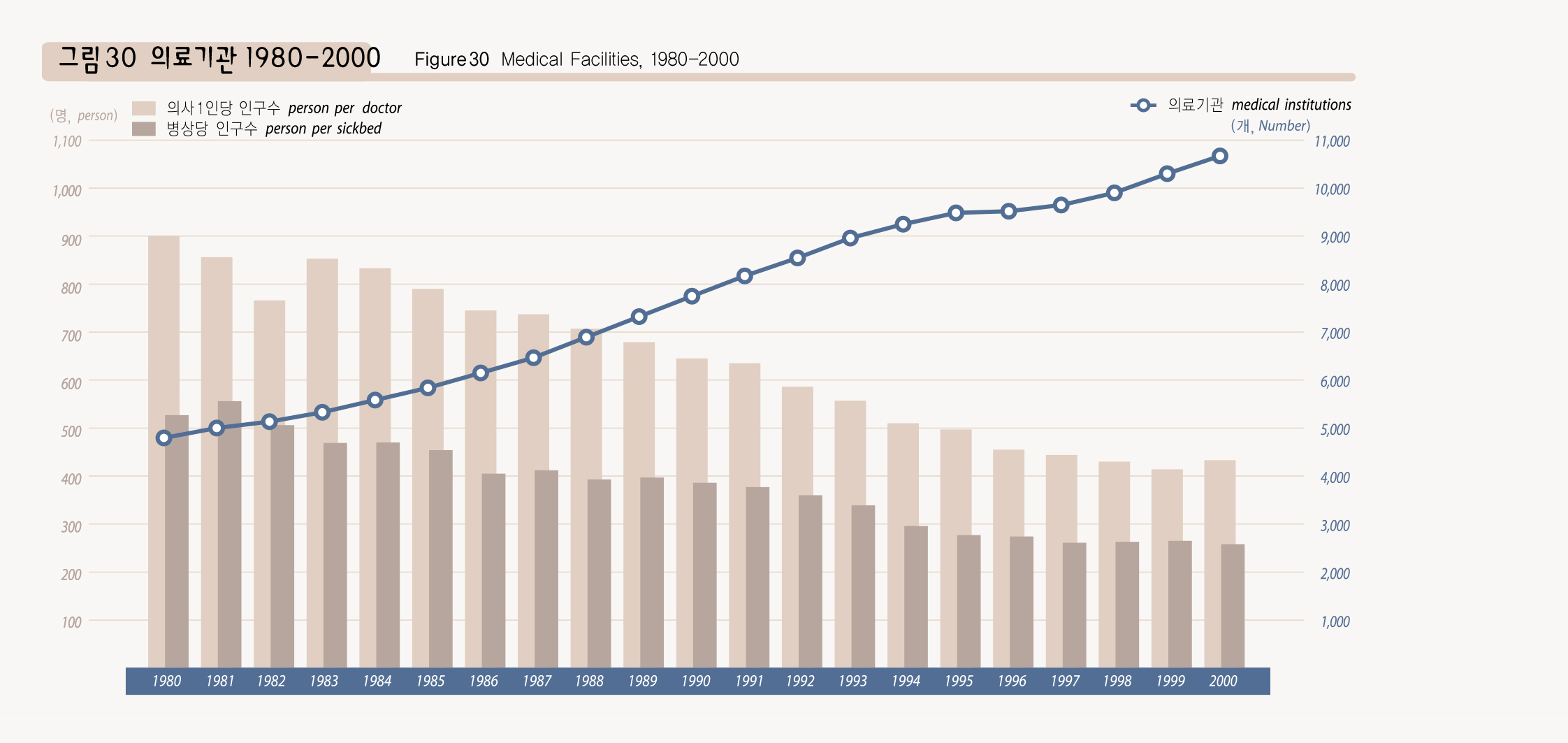-
사회복지
의료기관
-
의료기관
서울에는 1999년 현재 총 10,693개의 의료기관이 분포하고 있다. 의료기관의 수는 지난 20년간 계속적으로 증가하고 있으며, 병상당 인구수와 의사 1인당 인구수도 지속적으로 감소하여 의료서비스 수준은 개선되고 있다고 볼 수 있다.
의료기관의 경우 3차 의료기관은 중환자들이 이용하는 시설로서 접근성이 떨어져도 문제가 되지 않으나, 노인이나 저소득층이 주로 이용하는 보건소는 생활권 인근에 분포하는 것이 필수적이다. 의료기관의 공간적 분포를 보면 대규모 종합병원이나 병원은 도심과 서초, 강남, 송파지역에 편중되어 있으며, 보건소의 경우 구별로 하나씩 존재한다. 보건소의 경우 지역별 안배보다는 수요에 따라 저소득층이 많은 지역에는 의원이나 보건소 등이 많이 입지하도록 하는 것이 필요하다.
Medical Institutions
As of 1999, there are 10,693 medical institutions in Seoul. They have continuously been increasing over the past 20 years and average population by sickbed and doctor decreased, which means an improved medical service.
The third group medical institutions are for serious case patients and distant accessibility is not a big issue. It is, however, indispensable that public health centers that are used mostly by the elderly and low-income bracket people should be near where the users are. The spatial distribution of medical institutions of Seoul is that the large-scale general hospitals are concentrated mostly in downtown areas, Seocho, Gangnam, and Seongpa regions, while each gu(administrative unit) has one public health center. It is deemed advisable that instead of regional distribution, regions with lower-income bracket residents should have more special services doctor's offices and public health centers.
출처 : 대한병원 협회 전국병원명부, 2001
대한한방병원 협회 한방병원명부, 2001



